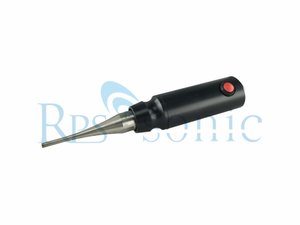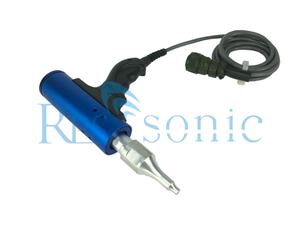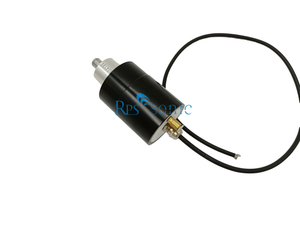How does the ultrasonic welding process show its charm in the automotive industry?
In the automotive industry, welding is a key link in the manufacture of automotive parts and bodywork. It plays a special role in connecting the upper and lower. At the same time, there are many models of automobile products, complex forming structures, specialized parts production, standardization, and quality of automobile manufacturing. The comprehensive requirements of efficiency and cost determine that automotive welding is a multidisciplinary, cross-disciplinary and technologically integrated production process
1. High dimensional accuracy requirements for welded parts:
In order to ensure the assembly precision and dimensional stability of the product, it is required to minimize the precision deviation of the thin plate parts before welding and the thermal stress and deformation after welding;
2. High performance requirements for welded joints:
Not only must meet static and dynamic mechanical performance indicators, but also have severe low cycle fatigue performance requirements;
3. High quality and consistent requirements for batch welding production;
4. High-beat and high-efficiency requirements for the welding production process;
5. Quality control and assurance of “zero defects”;

In view of the development goals of “lighter, safer, better performance and lower cost” for automotive products, current automotive welding technology is rapidly expanding and expanding based on traditional material connection concepts and methods, and is advanced to advanced The development of quantitative welding manufacturing, the main welding methods are resistance welding, gas shielded welding, plasma welding, laser welding technology (mainly used for body welding, welding and parts welding), plastic welding technology.
1. Plastic welding technology:
Ultrasonic plastic welding is to transmit high-frequency mechanical vibrations through the workpiece to the interface part to accelerate the movement of the molecules. The molecular friction is converted into heat to melt the plastic at the interface, so that the two weldments are truly integrated into one another by molecular coupling. Because this molecular motion is done in an instant, most of the ultrasonic plastic welding can be completed in 0.25 to 0.5 s. Ultrasonic plastic welding is suitable for plastic parts with small welding area, regular structure and thermoplasticity, such as window motor, built-in audio, foot pad, door panel, clutch fork, spare tire box, bumper, filter, front bezel, etc. .
2. Hot plate hot melt welding technology:
A thermoplastic welding process equipment that uses surface thermal conduction to melt the surface of a welded plastic workpiece. It is not limited by the material and size of the parts, and the welding seal is good. It is suitable for the welding of ultrasonic refractory plastic parts and large-sized special-shaped workpieces, such as airbags, instrument panels, sun visors, car water dispensers, taillights, expansion water tanks, brake oil cups, etc.
3. Rotating friction welding:
The mechanical energy is converted into heat energy by the relatively high-speed rotational friction of the workpiece, so that the contact surface of the workpiece to be welded is heated by friction, and then melted and pressurized to be welded together. The process is not limited by the size and material of the workpiece, and the welding strength is higher than other plastic welding processes, almost close to the strength of the plastic body. It is suitable for welding of rotating parts with large wall thickness and high connection strength, such as intake manifold.
4. Vibration friction plastic welding technology:
The workpiece is rubbed against each other under pressure, the energy is transmitted along the welded portion, and the plastic is melted by frictional heat generation in a specially designed portion, and after cooling, the cooling and solidification are continued under the state of being pressurized, and the interface strength after curing is performed. It is equivalent to the strength of the body plastic. It is suitable for workpieces with large welding area and complicated structure, and there is no special requirement for plastic type.
At present, plastic welding technology has been successfully used in automotive bumper welding, instrument panel and instrument panel welding, brake lights, airbags, automotive toolboxes, automotive door panels and other engine-related parts manufacturing industries. In recent years, many of the traditional metal-used parts have also begun to be replaced with plastics, such as intake manifolds, instrument pointers, radiator reinforcements, fuel tanks, filters, and the like. The continuous growth and leap-forward development of domestic auto brand manufacturers provides a very good opportunity for new technology applications and technology research in the field of welding. Low-energy, high-efficiency, non-toxic, non-polluting welding equipment will be the technological advancement trend in the future automotive welding line.
 English
English








